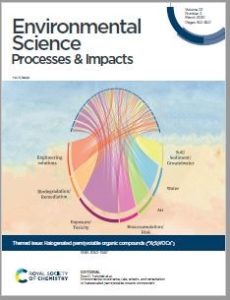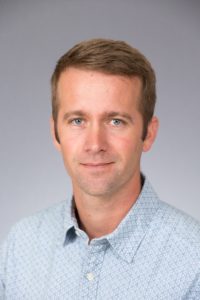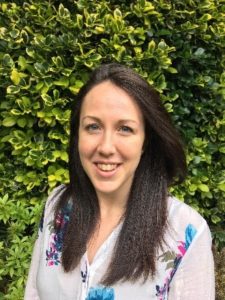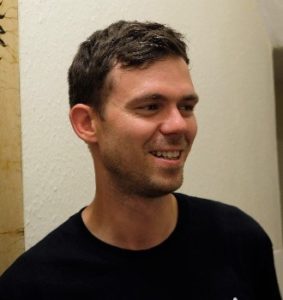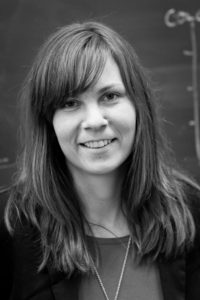A conversation about SARS-CoV-2 with Prof. Krista Wigginton and Prof. Tamar Kohn
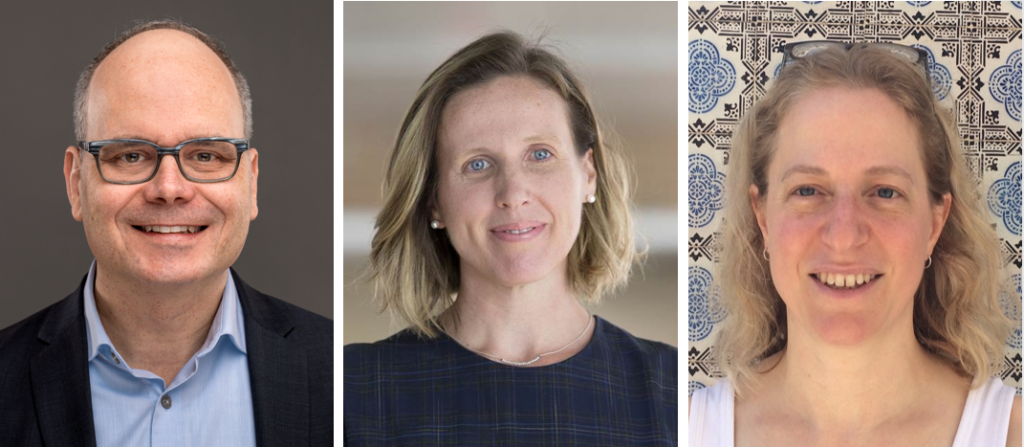
Left to Right: Kris McNeill, Krista Wigginton and Tamar Kohn
Kristopher McNeill
Profs. Wigginton and Kohn joined Kris McNeill for a teleconference to discuss SARS-CoV-2. All three are working from home, Wigginton in Palo Alto (on sabbatical at Stanford), Kohn in Bern, and McNeill in Zurich. Prof. Wigginton is an Associate Professor of Environmental Engineering at the University of Michigan and Prof. Kohn is a Professor of Environmental Engineering at EPFL. Both are experts on the inactivation of viruses. The interview took place on Sunday, April 5, 2020.
Kris: What do we know about this virus and what is the closest analog that we know the most about?
Krista: It’s an enveloped single-stranded RNA virus. Influenza is probably the one we know the most about that is similar. SARS-CoV-1 is, of course, more similar, but it’s hard to work with in the lab. We and others have been doing work with mouse coronavirus, and that’s a close analogue. The human SARS-CoV-1, SARS-CoV-2, and MERS are in the beta-corona virus genus, and mouse coronavirus is also in the beta genus.
Kris: How did you start with working with mouse coronavirus. Were you thinking about getting ahead of the next SARS outbreak or was it motivated more by the lack of data on enveloped viruses.
Krista: A bit of both. When I was writing my CAREER proposal, I was doing some reading about SARS-CoV-1 and MERS was also in the news, and I was trying to figure out if there was a role that environmental engineers could play. And there seemed to be. There was the case of the SARS outbreak in the Amoy Gardens apartment complex in Hong Kong. The general thought in that case was that sewage going through the buildings was mixing with the air system and aerosolized virus from sewage was being transported around the complex. And that’s a bit unusual. These enveloped respiratory viruses, like influenza and RSV, are not usually excreted in feces. You find viral RNA, but not usually infective viruses. So, if that is how SARS-CoV-1 was being transmitted, that is really rare.
Kris: Is there any evidence of this transmission pathway with the new one, SARS-CoV-2?
Krista: There are a lot of reports of people looking for this and failing to find it, including the Nature paper that came out on Thursday (Apr 2). The only one I know that found infective SARS-CoV-2 in feces was a non-peer-reviewed study from the Chinese CDC. It seems it was easier to find evidence for a fecal transmission route for SARS-CoV-1.
Tamar: For SARS-CoV-1, they did find they did find the virus can replicate in intestinal enterocytes. But no one thinks that the gut is the primary infection pathway. These are respiratory viruses.
Kris: What’s your take on why SARS-CoV-2 is worse than SARS-CoV-1.
Tamar: It’s not. In terms of mortality, SARS-CoV-1 is worse.
Krista: And that’s the problem. With the first SARS, you knew when someone was infected. There is no way someone was infected and was just walking around. It was more serious.
Tamar: With SARS-CoV-2 you have mildly symptomatic people in society transmitting the virus. It takes something like a week for the more serious symptoms to appear. During that first week, there seems to be a lot of spreading.
Kris: You are virus scientists in a pandemic. Is your behavior different from the rest of us?
Krista: I’m less worried about fomites than the general public. I’m not worried about getting the virus from cardboard boxes or packages from the grocery store. I have friends who are wiping everything down, but I’m not.
Tamar: I’m not either. If I haven’t ever gotten norovirus from the grocery store, I’m not worried about this one. Norovirus is a hell of a lot tougher and it’s shed in higher numbers.
Krista: Yeah, I’m not very worried about food and surfaces. Maybe some high touch areas are a concern, but not boxes at the store. And, can I say that people are putting a little too much trust in gloves.
Tamar: But gloves do help keep you from touching your face.
Kris: What kind of pandemic would cause you to worry about that route of transmission.
Krista: A gastrointestinal virus, a norovirus pandemic!
Tamar: That would be terrible.
Kris: You both study virus inactivation. How hard would you expect it be to inactivate SARS-CoV-2? Is there anything unusual about it?
Krista: It is a little unusual in that it has a relatively large genome for an RNA virus.
Kris: And larger genomes correspond with faster UV-inactivation. Is that right?
Krista: Yes, that’s right.
Tamar: It’s wimpy. It should be inactivated easily unless it is protected in some way by the matrix it is in, as Krista knows well. She’s been looking at masks.
Kris: Is that right? You are working on masks?
Krista: Yes, Michigan is a hot spot right now and is supposed to peak next week. Like many places, we have a shortage of PPE. Several students in my group are helping the hospital try to figure out how to recycle the N95 masks. We are putting viruses on masks and then testing various ways to inactivate them. I don’t know how translatable these results will be for other places because we are optimizing treatments based on what is available in the hospital in Ann Arbor.
Kris: What viruses are you using?
Krista: The commonly used bacteriophages, MS2 and Phi6, which is the model enveloped virus. We are also using a special influenza that cultures quickly and has a luciferase readout. And we are using a mouse coronavirus, but that is very slow to culture.
Kris: Where is that project now?
Krista: We’ve identified some methods that are effective at inactivating the viruses and at the same time, do not affect the integrity of the masks. The hospital is using our virus inactivation data to decide on how to move forward with a N95 recycling program.
Kris: What about your lab, Tamar?
Tamar: We are doing the same thing that a lot of labs are doing right now, which is looking for the virus in wastewater. Frankly, there’s a lot of talk and not many results yet. Virtual workshops, lots of one-page articles going up, networks and platforms being formed, webinars, you name it. But what we are all shooting for is developing an early warning tool. There’s just not much real data yet. To be honest, even if it works exactly as we hope, it’s not clear that a government would actually use the early warning that we would get from monitoring the wastewater system. We saw very slow responses from governments when faced with thousands of actual sick people. I’m not sure they’ll listen to more abstract results, literally from the sewer. That said, I think having a way to monitor viral load will be helpful in gauging the effectiveness of various mitigation measures. In any case, it will take some time before this tool will be available. Maybe it could help society respond to a second wave, but it won’t be ready to help us with this one.
Kris: Do we monitor for other viruses in wastewater?
Krista: Polio is an example.
Tamar: They monitor for polio in sewage in many countries. I only know of one case where it was successful in finding polio without clinical cases. It was in Israel and it was a Bedouin town where polio was first detected. [Science Translational Medicine 2017, 9, eaaf6786. DOI: 10.1126/scitrnalmed.aaf6786.] So, monitoring sewage can be useful, but what we are seeing now with the current crisis is that just having warning is not enough. You also need the political will to take action when you have warning. I have the feeling that we are overselling what sewage monitoring can do.
Krista: It might be more effective to swab high touch surfaces around town and look for the emergence of virus there. But on the topic of working with sewage to detect viruses, there are new guidelines from the US CDC that require BSL-3 PPE.
Kris: That seems potentially overly strict. Why are they doing that?
Krista: I think people at CDC are worried about the safety of concentrating viruses from wastewater.
Kris: Do they know we already work with it?
Krista: I think they do? But the potential for SARS-CoV-2 viruses to be present has them worried. There’s a lot of evidence that the virus RNA is excreted in feces, but not much evidence that infective viruses are excreted in feces at significant levels.
Kris: You are virus scientists in a pandemic. Is your behavior different from the rest of us?
Krista: I’m less worried about fomites than the general public. I’m not worried about getting the virus from cardboard boxes or packages from the grocery store. I have friends who are wiping everything down, but I’m not.
Tamar: I’m not either. If I haven’t ever gotten norovirus from the grocery store, I’m not worried about this one. Norovirus is a hell of a lot tougher and it’s shed in higher numbers.
Krista: Yeah, I’m not very worried about food and surfaces. Maybe some high touch areas are a concern, but not boxes at the store. And, can I say that people are putting a little too much trust in gloves.
Tamar: But gloves do help keep you from touching your face.
Kris: What kind of pandemic would cause you to worry about that route of transmission.
Krista: A gastrointestinal virus, a norovirus pandemic!
Tamar: That would be terrible.
Kris: You two have been working with viruses for a long time and now suddenly we are all talking about viruses. When this crisis hit, were you thinking ‘finally, it’s my time to shine!’?
Krista: Oh no, I much preferred when the pandemic was a potential future scenario that I could talk about in the first paragraph of my papers or at the start of my talks.
Tamar: Environmental engineers can do a few things that are helpful, but doing science in a pandemic is challenging, because everyone is so rushed that it lowers the quality of the work. But, yes, we can contribute a few things. The mask study that Krista is doing is a good example and translating what we know about aerosol transmission of influenza to SARS-CoV-2 is another. And sewage surveillance is great, though I’m not sure we need quite as many groups working on it as currently are.
Krista: What happens is everyone rushes to the answer the same questions. We saw it with the Ebola outbreak. Everyone focuses in on Ebola and then the crisis passes, and then Ebola research dies off for ten years. And the same thing will happen with SARS. And by chasing research on these very specific viruses, we miss the opportunity to prepare for the next one. If we zoom out a little bit and focus on viruses as a whole in a sustained manner, it would help us for both this one and the next one.
Tamar: Our community is not so cut-throat as some others and that is an opportunity. There is no reason why we need to rush to get a paper out in two weeks. Our community will still welcome the paper if it takes a bit longer to get out. We can slow down a bit and do better science.
Krista: One thing that is nice about what is happening right now is that there is more transparency than usual. Like with the mask work we are involved with, there is a network of universities that is sharing results and protocols, and that is helping to minimize overlap and redundancy.
Kris: Will all of this focused attention on SARS-CoV-2 help us understand influenza transmission better?
Tamar: I think it goes the other way around. The fact that we have had groups working on droplet and aerosol transmission of influenza, which is experimentally difficult to do, means that there was a research base ready when this crisis came. The flu research helps the coronavirus research more than the other way around.
Krista: I agree with that, but coronavirus does bring fresh eyes to virus research, and that will help.
Tamar: Yes, that’s right. And I think there are areas that we have not really delved into yet that this situation has shined light on. For example, there is an interesting question about the interaction between air pollution and susceptibility to this respiratory virus. Environmental engineers are well positioned to study this.
Kris: Thanks for the time, Krista and Tamar. Stay healthy and take care!
Comments Off on A conversation about SARS-CoV-2 with Prof. Krista Wigginton and Prof. Tamar Kohn

















